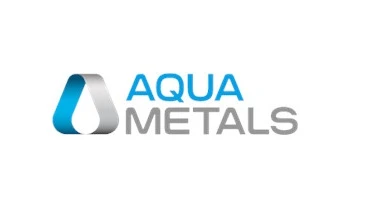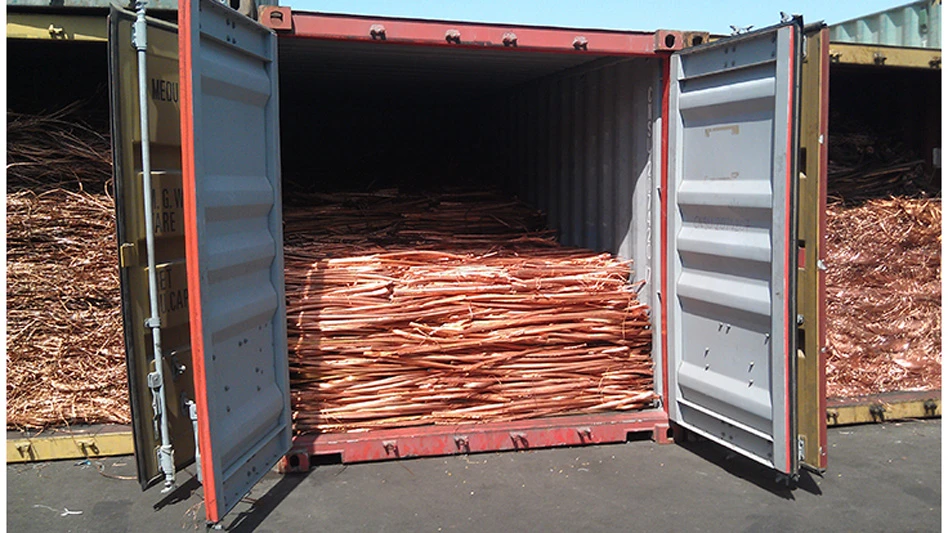It would not be going too far out on a limb to say few consumers checking out the 1999 models just arriving in showrooms are asking salespeople many questions, if any at all, about the vehicles’ weight. Consumer buying habits these past few years suggest that bigger—and, therefore, heavier—is better. Light trucks, including minivans, sport utility vehicles and pickups, continue to edge out small cars in the hearts and minds of buyers. The most hotly contested battle among manufacturers in the next year or two is likely to be in the "Suburban class" sport utility niche.
It’s not difficult to understand the attraction for large and heavy vehicles. Consumers want safety, versatility and status. And, with a bull economy (that’s only hiccuped just recently) and gasoline hovering at $1.00 per gallon, millions of consumers are not blinking at the $25,000 to $40,000 plus price tags on these vehicles.
But there is a paradox at work. While automobile manufacturers are falling all over themselves to sell as many of these highly profitable vehicles as possible, they’re also trying to reduce the weight of these vehicles as well as those in their entire fleets. Reduced weight translates into better fuel mileage. Automobile manufacturers are keenly aware that the day of reckoning is coming, be it through government fiat or through the vagaries of the supply of and demand for oil. And, automotive recyclers are watching, anticipating and reacting to these changes.
A Success Story
Before looking at how the changes in automobile content are affecting automotive recyclers, it’s worthwhile to take note of America’s most successful recycling story.
"Virtually every automobile winds up in the recycling stream," says Bill Heenan, president of the Steel Recycling Institute (SRI), Pittsburgh. "The recycling rate of automobiles is near 100%."
Comparatively, only 61% of aluminum cans, 30% of paper products and 20% of glass products are recycled by households in the United States, according to USCar, Southfield, Mich., a trade association funded largely by the Big Three auto makers.
Heenan notes that the automobile is the most recycled product in North America.
On average the total recycled content of steel and iron in each car is 44%. "Every piece of steel has recycled content," says Heenan. "Steel does not hold its memory." In other words, recycled steel from an automobile can be used to make a washing machine.
Steel, however, is not the only actor in this recycling success story. The stage is increasingly being shared by aluminum. The Aluminum Association says the average amount of aluminum in passenger cars increased 32% from 1991’s average of 191 pounds to today’s 252 pounds per car. Further, the Aluminum Association reports a recapture rate of 85%. (This figure assumes that 94% of "junked" vehicles are recycled and 90% of the aluminum is recaptured during the recycling process. 94% multiplied by 90%=85% recapture rate.)
Increasing Competition
But just as two elite actors vie for camera time in a motion picture, so too are steel and aluminum in automobile manufacturing. And, each has its supporters.
SRI’s Heenan emphasizes steel still is the preferred material if you consider cost, safety, repairability, insurance and recyclability. He adds the use of lighter weight steels will enable the material to compete in the area of fuel efficiency. One promising project, notes Heenan, is the introduction of the UltraLight Steel Auto Body (ULSAB). This project, which is in the demonstration project stage, will trim 26 component parts and 146 pounds from a five-passenger sedan’s body-in-white while also achieving significant improvements in bending and torsional rigidity, according to USCar.
Aluminum, however, does have its proponents. "Economics drives the recycling of aluminum," says Becky Wyss, technical specialist, Aluminum Company of America (ALCOA), Pittsburgh.
Although aluminum represents less than 10% of the weight in most vehicles at the time of their disposal, the value of the aluminum content is 35 to 50% of the value of all the materials in the scrapped car or truck, according to the Aluminum Association. The Aluminum Association reports that because aluminum has one-third the density of steel, aluminum structures have the ability to reduce vehicle weight by up to 55%, while retaining the size of the vehicle and without compromising safety. For example, Ford Motor Company’s aluminum intensive vehicle (AIV) based on the Taurus/Sable is 381 pounds or 47% lighter than the steel version of the car.
Down at the Shredder
How is this automobile material content battle affecting automotive recyclers? Perhaps not as much as imagined.
Bruce Cochran, director of technical service, Wabash Alloys, Wabash, Ind., emphasizes most of the cars being shredded today are old. "Cars built 10 years ago had only 120 pounds of aluminum on average compared with the 250 pounds in cars built within the past three to five years," said Cochran. The implication is the added aluminum content of newer cars has not yet found its way into the shredder stream.
Alan Crouch, president of River Metals Recycling, Newport, Ky., notes that large quantities of aluminum are not finding there way into the shredder stream because dismantlers are doing a better job of stripping cars. Dismantlers are taking out the valuable aluminum and selling off the parts. "Older cars tend to be shredded first because the parts aren’t as valuable," says Crouch.
The flip side of this is as aluminum increases in new cars there will be an expansion into a new industry, notes Cochran. Automobile dismantlers will take off hoods and doors and sell them directly to consumers, he adds. Parts such as engine blocks, cylinder heads, frame components and suspension parts will become more valuable to the dismantler. Whereas in the past these parts may have made it to the auto shredder, it’s less likely they will do so in the future.
"A lot of auto dismantlers have turned into scrap dealers," says Adam Weitsman, vice president/general manager, Upstate Shredding LLC, division of Ben Weitsman & Son, Owego, N.Y. He adds automobile dismantlers are taking their product directly to the shredders and are bypassing the scrap dealers. Increasingly, notes Weitsman, automobile dismantlers are using brokers to move their material.
Market Conditions
Weitsman emphasizes the most acute challenge for automotive recyclers lies in current market conditions. "The price for ferrous is not good right now," says Weitsman.
This is echoed by Kevin G. Gershowitz, executive vice president, Gershow Recycling, Medford, N.Y.
"The price of ferrous is dropping fast," says Gershowitz. "It’s a hard market for automobile shredding companies to make a buck.
Gershowitz points out that scrap consumers are demanding higher quality. "Those shredder operators who can meet the new standards of quality will get the orders," he says. "Those who can’t won’t."
It’s not that the scrap going to consumers in the past was of a poor quality. Gershowitz notes consumers who were demanding "A" quality scrap yesterday, are now demanding "A+" quality today.
Another competitive aspect for automotive recyclers is the number of shredders in operation.
"There seems to be a shredder popping up on every street corner," says Gershowitz. He adds this has exacerbated the competitive nature of the business in an already highly competitive atmosphere.
Super-Sized Shredders
Not to be overlooked by automotive recyclers is the impact of the relatively new super-sized shredders that are coming on-line throughout the country. These machines can handle enormous amounts of scrap. Crouch points out there is a finite amount of automobiles and sheet iron for these super shredders to devour.
The giant shredders, however, can bring cost efficiencies to the automotive recycler, which adds to the machines’ attraction. For example, notes Gershowitz, a super-sized shredder operator may be able to do maintenance during the day and avoid doing such work at night. This eliminates the need to pay overtime to maintenance workers.
Three Streams
What hasn’t changed very much in recent years for automobile recyclers is there are still three basic material streams in automobile shredding: one each for ferrous metals, nonferrous metals and for residue or fluff. Whereas the first two are money streams, the third is highly problematic. The automotive residue (ASR) typically consists of plastic, rubber, glass and other materials.
River Metals’ Crouch points out that for the most part it’s not economically feasible to use materials obtained in fluff.
This view is seconded by Weitsman. If the material you obtain through recycling is metallic "it’s a valuable item," he says. If it’s not metallic, "it’s a landfill item."
More on Fluff
Although ASR remains a landfill item for automotive recyclers, there is work being done to explore ways to make it a recyclable and, therefore, money making proposition. The Argonne National Laboratory, Argonne, Ill., in conjunction with USCar’s Vehicle Recycling Partnership is testing ways to use recycled foam for carpet padding or sound suppression in future production vehicles.
The Argonne Laboratory is also working with cement companies to recycle iron-oxide-rich fines – metal particles less than one-quarter inch in diameter. The fines could be used as a potential cost-effective substitute for iron sources, such as iron or mill scales, in the production of cement.
That "Other" Material
Automobile manufacturers have not confined their weight-saving efforts to substituting one metal for another. Anyone driving a relatively new car today will be hard pressed not to notice the significant amount of plastic not only on the inside of their vehicle, but on the outside too. Unfortunately, automotive recyclers take a dim view of plastic and consider it for the most part worthless fluff.
"We have to generate profit," says Jeffrey N. Cole, chairman and CEO, Ferrous Processing & Trading Co., Detroit, Mich. "We can’t tax the neighborhood."
Cole emphasizes profits can and are generated by recycling metals. Such profits cannot be recouped from plastic.
"You can only make so many plastic picnic tables and birdfeeders," says Cole. He adds efforts to recycle plastic through disassembly are probably politically, but not economically, motivated.
Weitsman concurs by noting the technology to recover nonferrous metals from shredders is quite effective. However, "when you go to plastics, you have problems."
Ron Liesemer, vice president, technology, American Plastics Council, Washington, D.C., acknowledges the economics for recycling plastic for automotive recyclers "is not there yet." However, he points out the plastics industry is working to find better ways to identify and separate the various types of plastic in shredder residue.
Promising work, still in the developmental stage, is being conducted at MBA Polymers, Richmond, Calif. The firm uses proprietary processes to liberate and separate the various grades of plastic received from shredders and dismantlers. The plastic material is eventually sold as flake or blended with other plastics, says MBA’s president, Michael Biddle.
One of the biggest obstacles to using the finished product is its appearance, adds Biddle. However, in nonvisual areas, such plastic has the potential for greater use.
What's Ahead
Automobile manufacturers are committed in various ways to automotive recycling. Literature from Ford, for example, says, "Ford’s ultimate goal is to economically design and manufacture cars and trucks that come close to being totally recyclable and maximize the use of materials recovered from end-of-life products."
To meet this goal Ford and its competitors will need to build their vehicles with materials that can be bought, processed, transported and sold by automotive recyclers at a profit. This is the recycling challenge at the dawn of a new century.
The author is a former editor of Recycling Today.
Sidebar #1:
Automotive Recycling at at Glance
-$5 billion in sales annually.
-Employs more than 40,000 people at more than 7,000 businesses in the United States.
-Recycles more than 11 million cars annually, saving an estimated 85 million barrels of oil that would otherwise be used in the manufacture of replacement parts.
-Supplies 37% of all ferrous scrap to the U.S. scrap processing industry.
-Dismantlers provide auto parts available for as much as 50% below the cost for comparable new parts.
Source: Automotive Recyclers Association
Sidebar #2:
Through the Looking Glass
Among the automotive parts not typically recycled are windshields. While recycling glass would seem to be an easy enough proposition that takes advantage of an established market, windshield glass poses special problems not found with glass jars or bottles.
The plastic laminates that help make windshield glass tougher and more protective of light and UV rays also means standard glass recycling methods of simply reducing the glass into cullet cannot be used.
Currently, auto dismantlers may harvest windshields in good condition for re-use, but the rest are simply crushed and sent through the hammermill to make up part of the auto shredder residue pile. Further, auto repair shops send a separate significant-sized stream of windshield glass to landfills throughout North America.
USCAR, the Southfield, Mich.-based research consortium funded by the Big Three, is sponsoring a pilot project to look into ways of separating the glass and plastic laminate, and then recycling both materials.
According to J.D. Snyder, one of the pilot project’s directors, over 70 tons of windshield glass and plastic film is landfilled each month by just one Michigan chain of glass replacement stores.
"If we can find a cheaper and quicker way to recycle windshields through this study, dismantlers and glass repair shops would have motivation to recycle them rather than send them to landfills," John Caron, another USCAR project team member, tells the USCAR newsletter.
As part of the project, five metropolitan Detroit glass replacement stores operated by Henderson Glass will collect damaged windshields for 90 days. The windshield glass will be collected by Waste Management and transported to a Detroit research facility operated by Strategic Materials of Houston and the Recycling Materials Center, an Ann Arbor-based research group.
"At the conclusion of this pilot project, we will have important cost and performance data and information to evaluate the viability of windshield recycling," says Snyder. "And the results of this project could have implications for other post-consumer material recycling opportunities as well."
—Brian Taylor

Explore the October 1998 Issue
Check out more from this issue and find your next story to read.
Latest from Recycling Today
- APR, RecyClass release partnership progress report
- Clearpoint Recycling, Enviroo sign PET supply contract
- Invista expanding ISCC Plus certification program
- Redwood partnership targets recycling of medium-format batteries
- Enfinite forms Hazardous & Specialty Waste Management Council
- Combined DRS, EPR legislation introduced in Rhode Island
- Eureka Recycling starts up newly upgraded MRF
- Reconomy Close the Gap campaign highlights need for circularity






